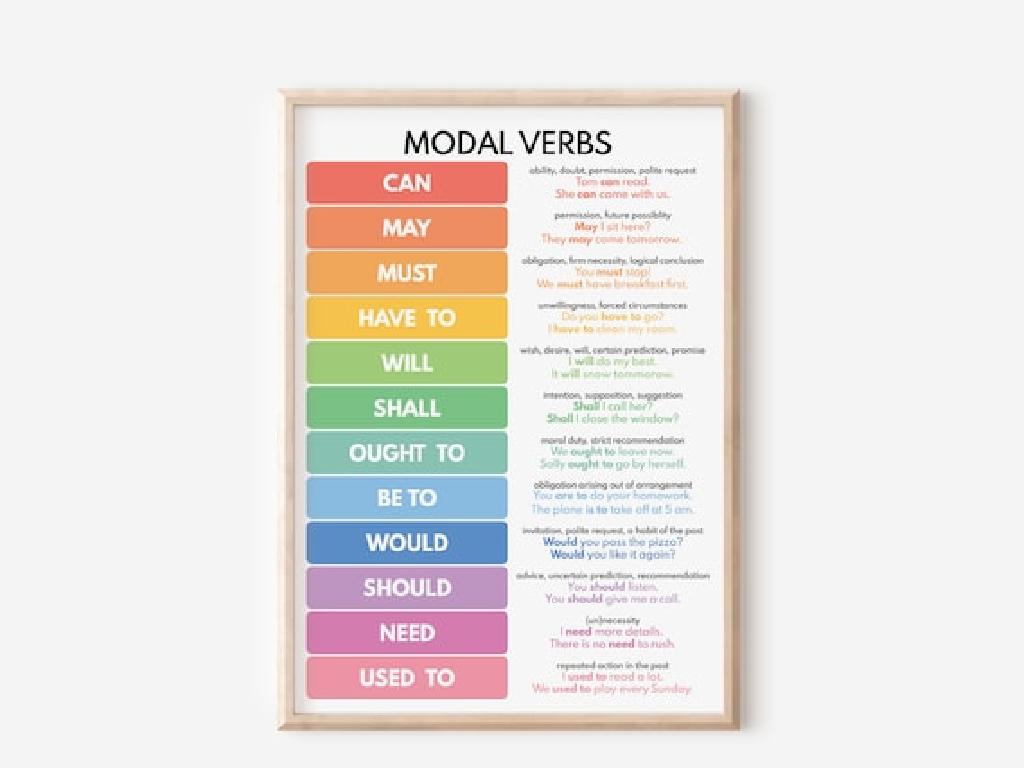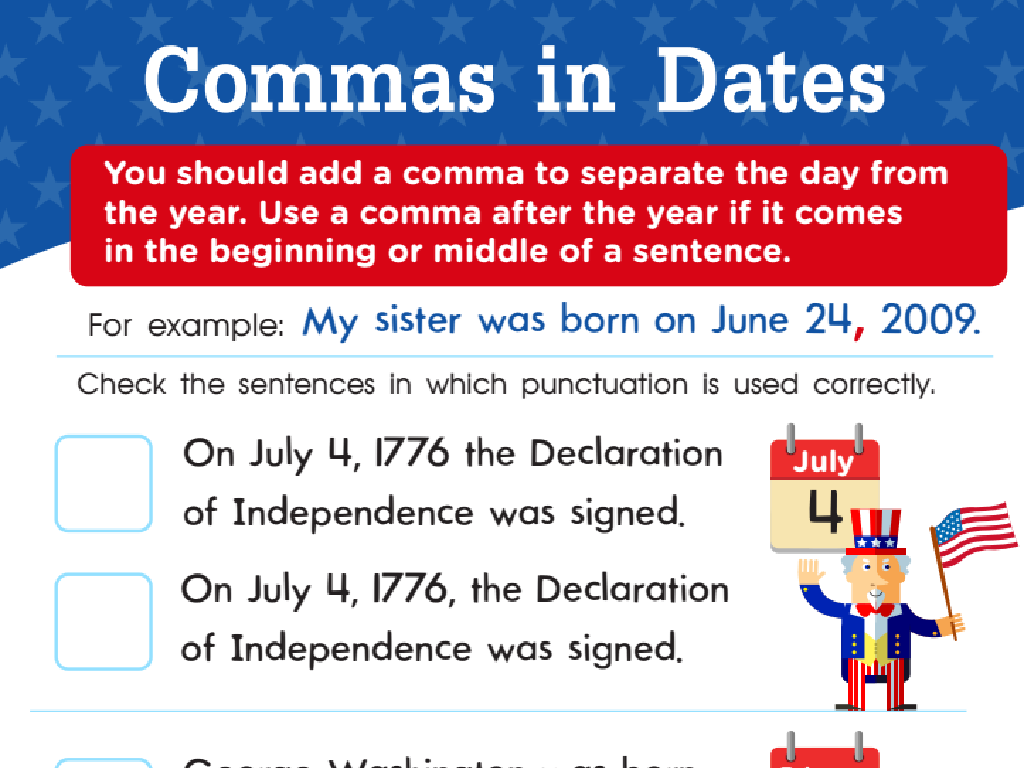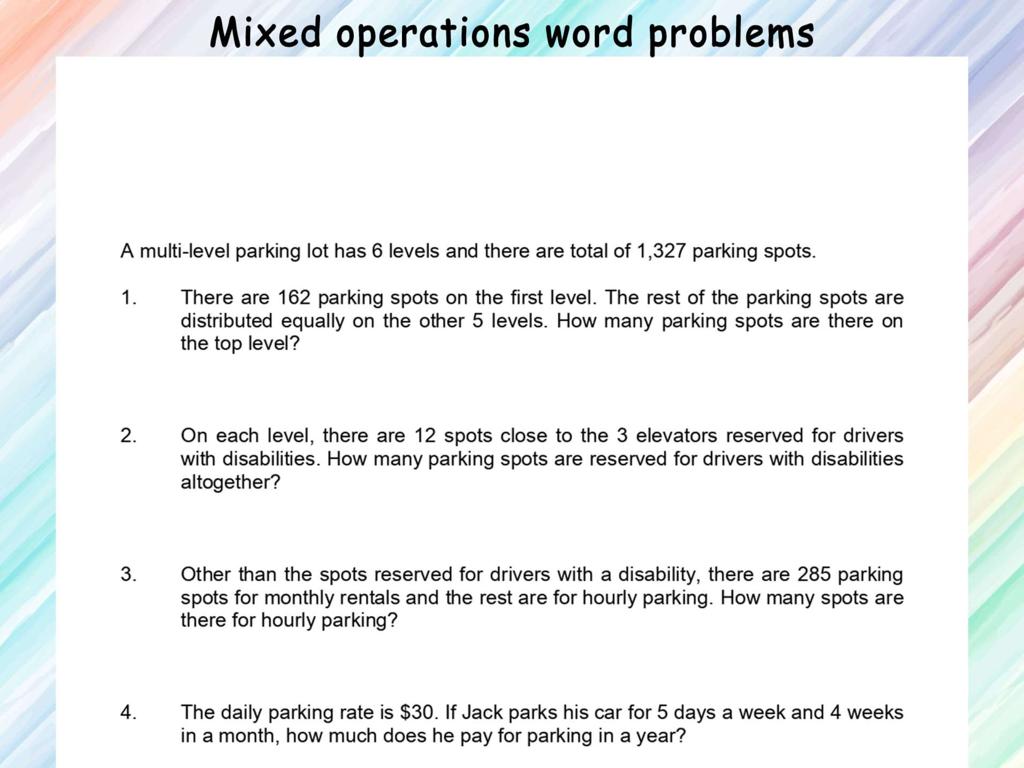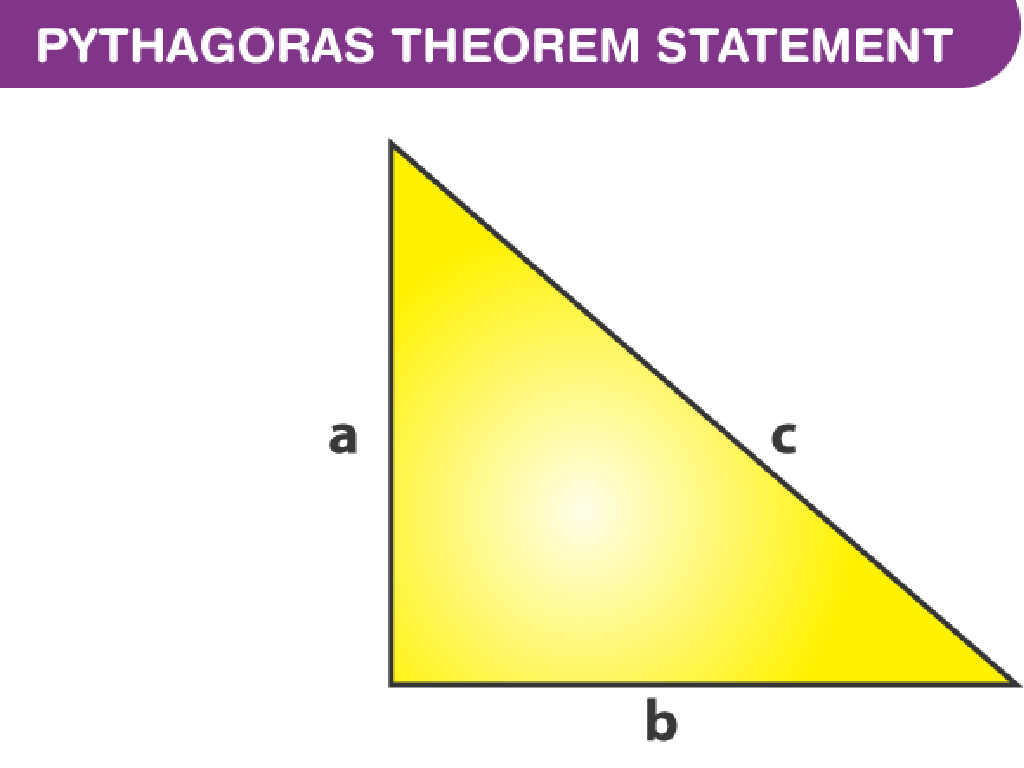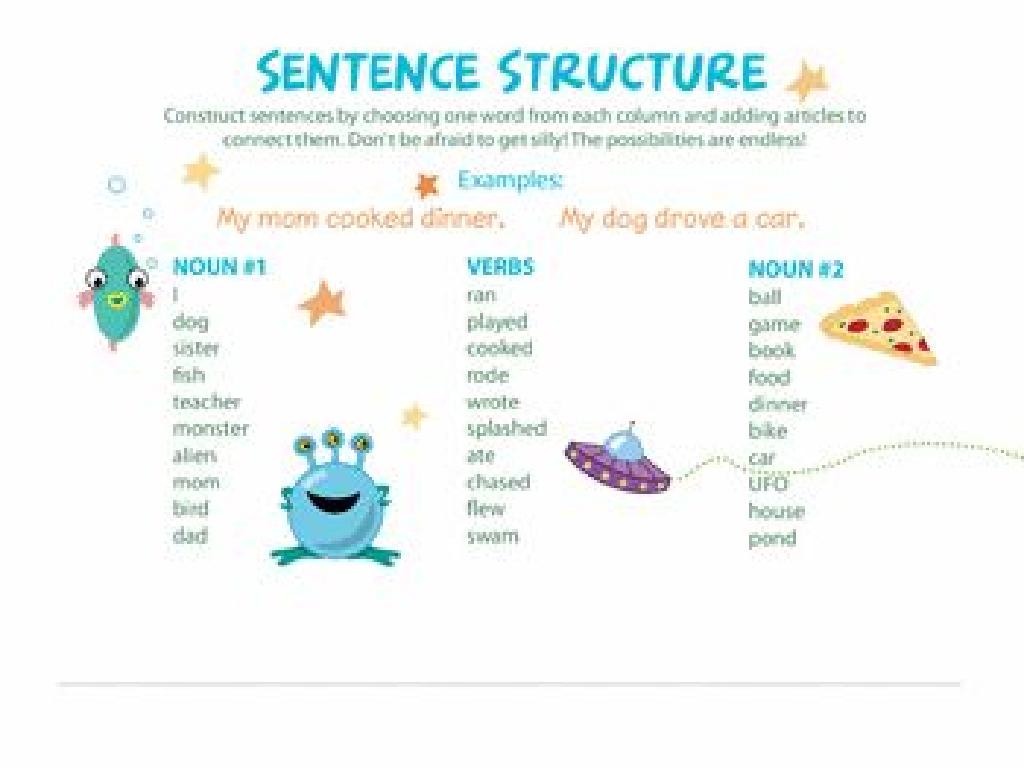Rounding Input/Output Tables
Subject: Math
Grade: Fourth grade
Topic: Rounding
Please LOG IN to download the presentation. Access is available to registered users only.
View More Content
Welcome to Rounding Numbers!
– Grasping the rounding concept
– Rounding means approximating a number to the nearest place value.
– Rounding in daily life
– Helps estimate costs, times, and measurements.
– Today’s focus: Input/Output tables
– We’ll learn to round numbers in tables to solve problems.
– Practice rounding with examples
|
Begin the lesson by explaining the concept of rounding as a way to simplify numbers, making them easier to work with. Emphasize how rounding is a practical skill used in everyday situations such as shopping, cooking, or planning time. Introduce input/output tables as a tool for organizing numbers and demonstrate how rounding can help in quickly estimating the results. Provide examples of input/output tables and guide students through the process of rounding the numbers in these tables. Encourage students to think of situations where they might use rounding with input/output tables in real life.
Understanding Rounding in Math
– What is rounding?
– Simplifying numbers while keeping them close to original value
– Rules for rounding numbers
– If a digit is 5 or more, round up. If it’s less than 5, round down
– Rounding to the nearest ten
– Example: 64 rounded to nearest ten is 60
– Rounding to the nearest hundred
– Example: 142 rounded to nearest hundred is 100
|
Rounding is a fundamental concept in mathematics that simplifies numbers, making them easier to work with while maintaining their approximate value. It’s important to explain the rules clearly: look at the digit to the right of the place you are rounding to; if it’s 5 or more, round up, and if it’s less than 5, round down. Provide examples of rounding to the nearest ten and hundred, as these are common rounding units for fourth graders. Use number lines to visually demonstrate the rounding process. Encourage students to practice with different numbers and to check their work by comparing the rounded number to the original number.
Rounding to the Nearest Ten
– Examine the ones place digit
– Look at the second digit in 34, which is 4
– 5 or more, round up
– Since 4 is less than 5, we round down
– Less than 5, stay the same
– Practice: Round 34
– 34 rounded to the nearest ten is 30
|
This slide introduces students to the concept of rounding numbers to the nearest ten. Start by explaining the importance of the ones place digit in rounding decisions. Emphasize the rule: if the ones place is 5 or more, the number rounds up to the next ten; if it’s less than 5, the number stays the same. Use the number 34 as a practice example to illustrate the concept. Explain that since the ones place (4) is less than 5, 34 rounds down to 30. Encourage students to practice with more examples and provide immediate feedback to reinforce their understanding.
Rounding to the Nearest Hundred
– Examine the tens place digit
– 5 or more, round up
– If tens digit is 5, 6, 7, 8, or 9, increase the hundreds place by 1
– Less than 5, round down
– If tens digit is 0, 1, 2, 3, or 4, keep the hundreds place the same
– Practice: Round 142
– Example: 142 has 4 in tens place, so we round down to 100
|
This slide introduces students to the concept of rounding numbers to the nearest hundred. Start by looking at the number in the tens place to determine whether to round up or down. If the tens place is 5 or above, the number is rounded up to the next hundred; if it’s below 5, it stays the same. Use 142 as a practice example to illustrate the concept: since the tens place is 4, which is less than 5, 142 is rounded down to 100. Encourage students to practice with more examples and explain that rounding helps to simplify numbers, making them easier to work with in various math problems.
Exploring Input/Output Tables
– What are input/output tables?
– Tables that show how a rule applies to different numbers
– Their role in math
– They help us see patterns and relationships in math
– Finding the table’s rule
– To discover the rule, look at how input numbers change to output numbers
– Practice with examples
– Let’s try rounding numbers in tables together!
|
This slide introduces input/output tables, which are tools used to understand functions in math. They consist of ‘input’ values that, when a specific ‘rule’ is applied, result in ‘output’ values. Emphasize the importance of these tables in recognizing patterns and relationships between numbers. Teach students how to identify the rule by examining the changes from input to output. For example, if the input is 5, 6, 7, and the output is 10, 12, 14, the rule is to multiply by 2. After explaining, engage students with hands-on practice by rounding numbers within input/output tables to reinforce the concept.
Rounding in Input/Output Tables
– Learn to round numbers in tables
– Round to the nearest ten example
– If input is 47, output rounds to 50
– Round to the nearest hundred example
– With input 256, output rounds to 300
– Practice rounding with tables
|
This slide introduces students to the concept of rounding numbers within input/output tables, a key skill in understanding numerical relationships and estimation. Start by explaining the rules of rounding and then apply these rules to numbers in an input/output table format. Provide clear examples by rounding numbers to the nearest ten and hundred, showing the before and after in the table. Encourage students to look for patterns in rounding and use these patterns to predict outputs. After the presentation, give students a variety of input/output tables to practice rounding to different place values. This will help solidify their understanding of the concept.
Let’s Practice Rounding Together!
– Fill in rounded numbers activity
– Work in pairs on the table
– Collaborate to find rounded numbers
– Share answers with the class
– Discuss your findings as a team
– Understand rounding concepts
– This reinforces the rounding rules
|
This slide introduces a class activity focused on rounding numbers within input/output tables. Students are to work in pairs, which encourages collaboration and peer learning. Each pair will receive an input/output table with numbers that they need to round to the nearest ten or hundred, depending on the instruction. After completing the activity, pairs will share their answers with the class, allowing for discussion and correction of any misunderstandings. This activity not only reinforces the concept of rounding but also enhances communication skills. For the teacher: Prepare input/output tables with varying levels of difficulty to cater to different skill levels within the class. Have extra activities ready for students who finish early, such as creating their own input/output tables or helping others.
Rounding Review & Questions
– Recap today’s rounding lesson
– We learned how to round numbers to the nearest ten and hundred.
– Ask any questions you have
– Discuss real-life rounding uses
– Where might you use rounding at home or in the store?
– Practice makes perfect
– Keep practicing with homework and class activities.
|
This slide aims to consolidate the students’ understanding of rounding numbers within input/output tables. Begin by summarizing the key points of the lesson, emphasizing the steps to round numbers to the nearest ten and hundred. Encourage students to ask questions or express any confusion they may have. Facilitate a discussion on how rounding is used in everyday life, such as estimating costs while shopping or during time management. Conclude by reminding students that mastering rounding comes with practice, and encourage them to engage with their homework and participate in class activities to improve their skills.
Class Activity: Rounding Relay!
– Split into teams for a relay
– Round numbers in tables quickly
– Use input/output tables to practice rounding
– First team with correct answers wins
– Check each other’s work for accuracy
– Earn points for your team
|
This activity is designed to make learning about rounding numbers fun and interactive. Divide the class into small teams, and provide each team with an input/output table filled with numbers to round to the nearest ten or hundred. Use a timer to add excitement. The first team to correctly round all numbers in their table wins a point. This encourages teamwork, quick thinking, and reinforces their understanding of rounding. Have multiple rounds to give each team a chance to win. Possible variations include different rounding rules, using larger numbers, or incorporating word problems that require rounding to solve.

